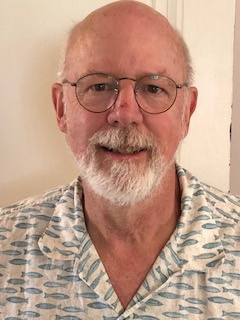Field Notes: Teaching Infinite Hope
Ashley Bryan’s Infinite Hope: A Black Artist’s Journey from World War II to Peace won the 2020 Boston Globe–Horn Book Award for Nonfiction and a Coretta Scott King Illustrator Honor Award — but as a teacher, children’s literature aficionado, and friend of Ashley’s, I’ve known the book was special for a long time.
 Ashley Bryan’s Infinite Hope: A Black Artist’s Journey from World War II to Peace won the 2020 Boston Globe–Horn Book Award for Nonfiction and a Coretta Scott King Illustrator Honor Award — but as a teacher, children’s literature aficionado, and friend of Ashley’s, I’ve known the book was special for a long time.
Ashley Bryan’s Infinite Hope: A Black Artist’s Journey from World War II to Peace won the 2020 Boston Globe–Horn Book Award for Nonfiction and a Coretta Scott King Illustrator Honor Award — but as a teacher, children’s literature aficionado, and friend of Ashley’s, I’ve known the book was special for a long time.
It’s not always so that a hero in your life is also a friend, but Ashley Bryan is both to me. My wife, Robin Smith, and I first met Ashley years ago, at a Children’s Literature New England (CLNE) conference, and we quickly became friends. I invited him to speak at my school in Nashville, Tennessee, and he invited us to “come see me on my island!” So, Robin found a beautiful one-hundred-year-old house to rent, looking north to Mount Desert Island and the mountains of Acadia National Park, and thus began a summertime tradition of going to Little Cranberry Island. We would fly to Boston, take a thirty-seater plane to Bar Harbor, catch a taxi, stop at the nearest grocery store to stock up on provisions, ride down to Northeast Harbor, and take the mail boat to Little Cranberry, also called Islesford.

(Left to right: Dean Schneider, Ashley Bryan, and Robin Smith on Little Cranberry Island. Photo: Susan Valdina.)
The island is tiny. It’s a lobstering community with only seventy year-round residents, and Ashley has lived there since the 1980s. We would drop in to see him at his house around the corner, and he would come over for dinner. The island became a beloved place for us, and when Robin died in 2017, she requested that her ashes be spread on the island. We did that in the summer of 2018, and Ashley came down, driven in a golf cart by his niece, walking with a cane to the front porch, where we all shared memories, songs, and poetry.
* * *
A real pleasure on the island was going to Ashley’s in-house studio and seeing whatever book he was working on, his original illustrations laid out on his desk and Ashley there to explain his work. When he was working on Freedom Over Me (2016), he would hold up a just-finished original woodcut-like illustration and launch into the poem that went with it. Same as the year before, when he was working on his collection of Langston Hughes poems, Sail Away (2015). It was like a pattern in nature: we would see his art in progress, and a year later a finished book would be released.
At some point we began hearing about Ashley’s World War II experiences and seeing examples of his drawings from those days. Ashley had long kept the fact that he had served in the army private, with only his closest, lifelong friends knowing anything about it. But then he talked about it at a CLNE conference and in the foreword to Tanya Lee Stone’s Courage Has No Color (2013): “You see, I am a black veteran of World War II. I was drafted at the age of nineteen, out of art college in New York City, into a port battalion.” In 2014, the Islesford Historical Museum hosted “A Visit with Ashley Bryan,” a retrospective look at Ashley’s life as an artist — his fine art, puppets, stained-glass windows, picture books, and his World War II art. Robin and I went every day, basking in the beauty of Ashley’s art and Ashley’s enthusiasm for life and art. Ashley was working on a book rooted in the show, and he was anxious to see the finished copy, which came out in the fall of 2019.
* * *
As soon as I received my copy of Infinite Hope, I knew I wanted to teach the book to my seventh-grade class — as a memoir, as a powerful personal account of racism and segregation in the United States, as a World War II story, and as an art book. I knew I was in a unique position to enrich a reading of the book for my students. A unit on Infinite Hope would be supported by my trove of handwritten letters from Ashley over the years; my Ashley Bryan picture-book collection; postcards and photographs; the wonderful video about Ashley titled I Know a Man that I picked up at a shop in Maine; and my house full of Ashley Bryan artwork — including a large plein air painting titled Dahlias at Dawn and a large linocut illustration from the 1970s from Walk Together Children: Black American Spirituals. (The linocut was sent during Robin’s illness and is inscribed: “Dear Robin, I send my children to Walk with you along the Way to Wellness Land. Love Ashley.”)

(Dahlias at Dawn by Ashley Bryan. Photo: Dean Schneider.)
So, I would be sharing my treasures with my students. And that was tricky: how would I take something so meaningful to me and make it meaningful to seventh graders?
* * *
One rule of teaching books — a rule unfortunately often broken by those who want to teach every book the same way — is to let the book show us how to teach it. For example, I would choose to teach scenes in a novel rich in dialogue through readers’ theater, as I described in a previous Horn Book article (“Reading as Theater,” September/October 2019). But Infinite Hope is a memoir, with little dialogue, so I used a different technique: “guided reading.”
I would put a writing prompt up on the board and have students read a section of the book with that statement or question in mind, knowing they would then write a page or so addressing it: “Explain why Ashley wasn’t cut out to be a good soldier” (pages 16–33); “Describe D-Day. What made the operation especially difficult for Black soldiers? What does Ashley credit for his survival?” (pages 45–68). Questions like these take students seriously, as the students must first read carefully before beginning to write.
But another rule of good teaching is to mix things up; not only do you teach different books in different ways, but within the same book, you don’t want to get into too much of a routine. In the first section of Infinite Hope we studied the World War II information, which is very well presented, with maps, Ashley’s art, journal entries, and archival photographs. After the “guided reading” sections, I read aloud quite a bit, finishing the book by reading aloud the final sections about Ashley on Little Cranberry Island.
 These last sections of the book are beautifully illustrated with photographs of Ashley’s stained-glass windows, puppets, and paintings. So I showed my students the stunning photographs of the stained-glass windows in Ashley Bryan: Words to My Life’s Song (2009). I brought in a copy of Ashley Bryan’s Puppets (2014) in order to show them his puppet creations, and read aloud a couple of the poems.
These last sections of the book are beautifully illustrated with photographs of Ashley’s stained-glass windows, puppets, and paintings. So I showed my students the stunning photographs of the stained-glass windows in Ashley Bryan: Words to My Life’s Song (2009). I brought in a copy of Ashley Bryan’s Puppets (2014) in order to show them his puppet creations, and read aloud a couple of the poems.
And because I wanted my students to know Ashley the man and artist beyond Ashley the soldier in World War II, I also told them stories. How he created stained-glass windows out of sea glass and how he taught my daughter the technique; how you can go to the church around the corner from his house at any hour, day or night, and see those windows. I told them stories of watching a puppet come alive in Ashley’s hands. Stories of seeing Ashley outside in the early morning sun, painting.
* * *
Every time you teach a book for the first time, you learn how you can improve upon your first performance. I have already discussed with my school’s art teacher the idea of coordinating our work next year, making puppets, stained glass, and collage (as in 2011’s Beautiful Blackbird) — all examples of Ashley’s art that they learned about through studying the remarkable Infinite Hope.
From the September/October 2020 issue of The Horn Book Magazine.

RELATED
ALREADY A SUBSCRIBER? LOG IN
We are currently offering this content for free. Sign up now to activate your personal profile, where you can save articles for future viewing.






Add Comment :-
Be the first reader to comment.
Comment Policy:
Comment should not be empty !!!